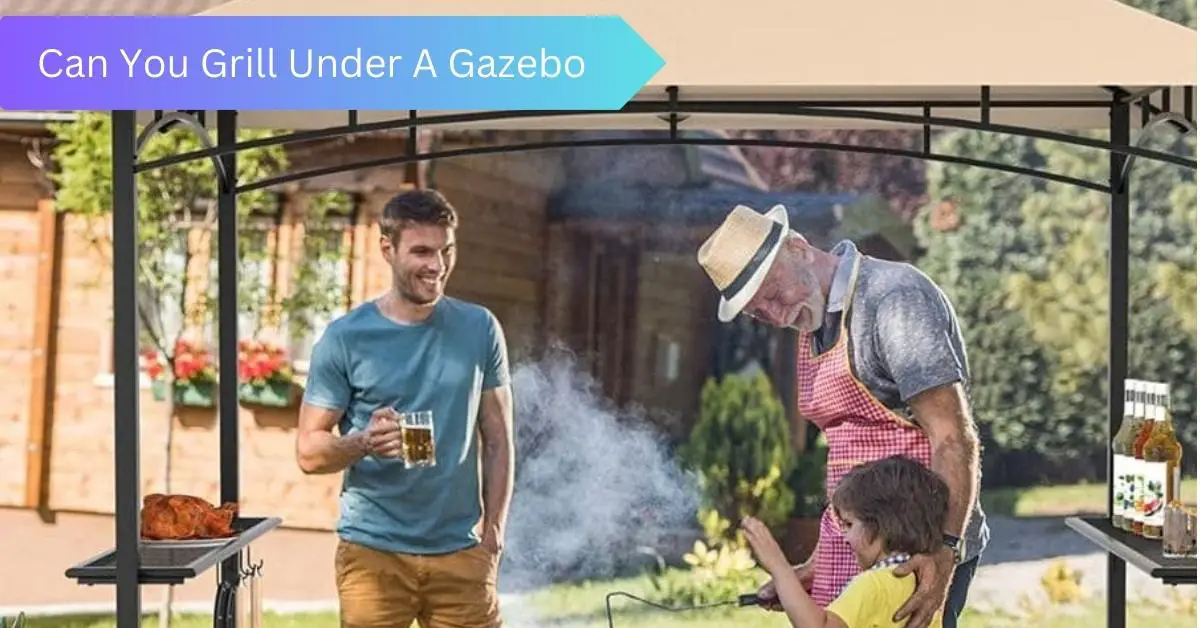A gazebo is a popular outdoor structure that provides shade and shelter from the elements. Many people enjoy using their gazebos for entertaining guests, relaxing, and enjoying meals.
However, some may wonder if grilling under a gazebo is safe. Grilling under a gazebo can be convenient, especially during inclement weather.
However, taking precautions is essential to ensure that the gazebo doesn’t catch fire or become damaged.
There are a few factors to consider when determining whether it’s safe to grill under a gazebo. The first is the type of gazebo. A metal or stone gazebo is less likely to catch fire than a wooden gazebo.
Additionally, the size of the gazebo and the height of the grill should be taken into account. If the gazebo is small, and the grill is too close to the ceiling, there is a risk of a fire.
Lastly, it’s crucial to have proper ventilation to prevent smoke and fumes from building up inside the gazebo.
In this article, we will delve deeper into the topic and provide some tips on how to grill under a gazebo safely.
Can you grill under a gazebo: Grilling under a gazebo is generally not recommended. Gazebos are typically made of wood or other flammable materials, and the heat and smoke from a grill can pose a fire hazard. In addition, grilling under a gazebo can trap smoke and heat, leading to poor ventilation and potential health risks. It is best to grill in an open, well-ventilated area away from structures.
Can you grill under a gazebo?
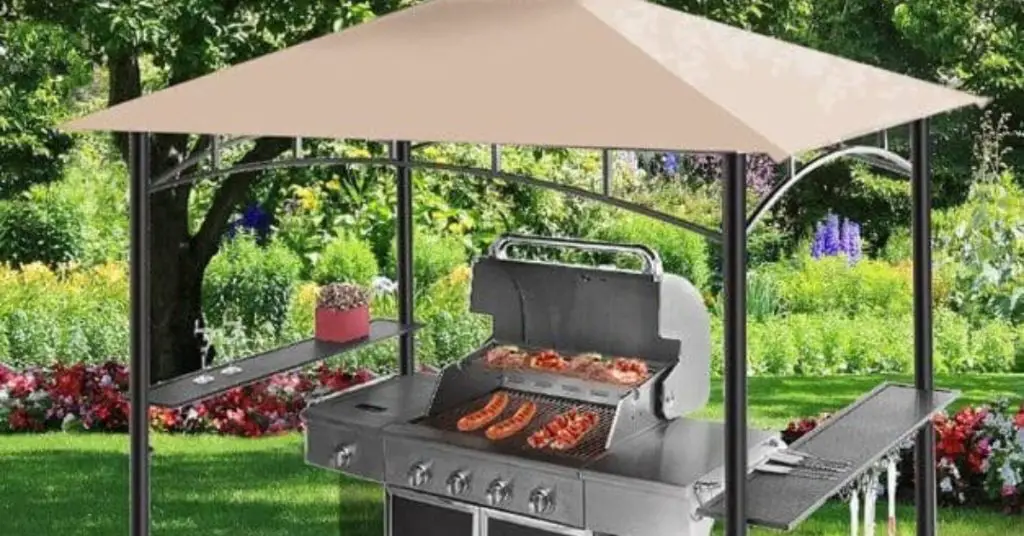
Grilling under a gazebo can be a great way to enjoy outdoor cooking while still being protected from the elements. However, there are several risks to consider before you start grilling under your gazebo.
In this article, we’ll explore the potential hazards of grilling under a gazebo and the factors you need to consider to make it a safe and enjoyable experience.
Possible Risks of Grilling Under a Gazebo
While grilling under a gazebo can be a fun and convenient way to enjoy outdoor cooking, it’s important to be aware of the potential risks involved. Here are some possible risks of grilling under a gazebo:
Fire Hazards
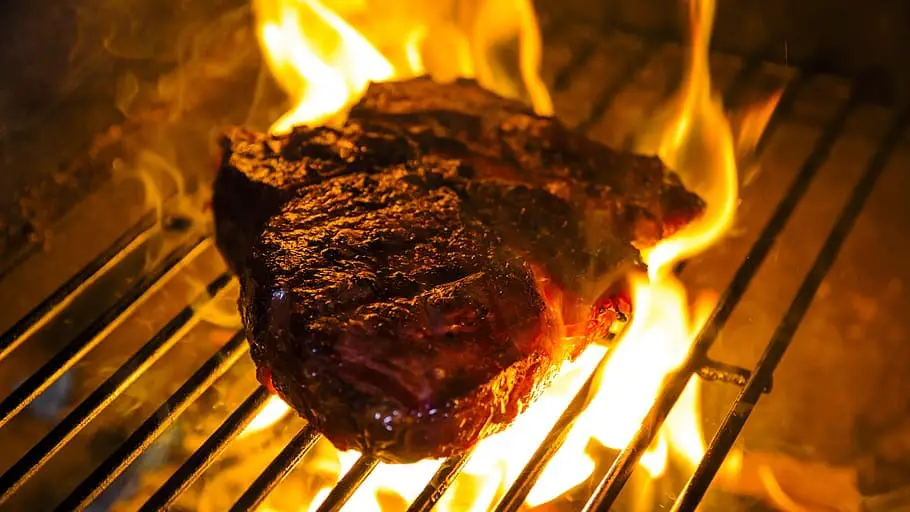
Grilling under a gazebo can be a fire hazard if you’re not careful. If you’re using a gas grill, make sure that the gas tank is turned off when you’re not using it. Never leave the grill unattended, and keep a fire extinguisher nearby in case of emergencies.
Additionally, some gazebos are made from flammable materials that could catch fire if exposed to high heat. Before you start grilling, make sure that your gazebo is made of fire-resistant materials.
Smoke Inhalation
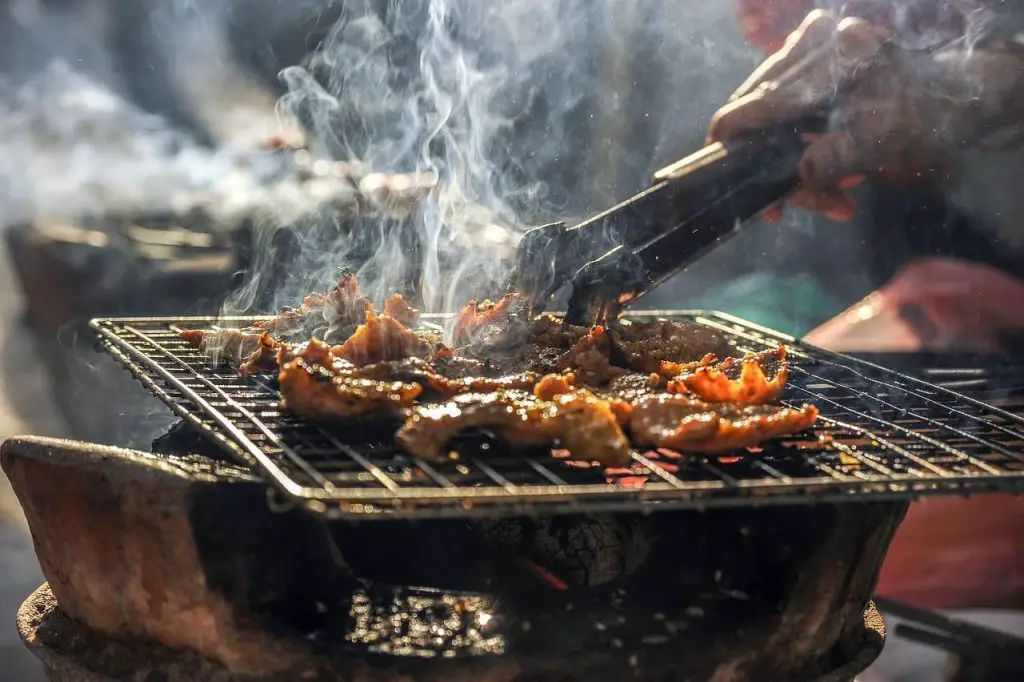
Grilling under a gazebo can lead to smoke inhalation if the space is not properly ventilated. Smoke inhalation can cause respiratory problems, especially if you have pre-existing conditions such as asthma.
Make sure that your gazebo has proper ventilation to prevent smoke from building up and becoming a health hazard.
Carbon Monoxide Poisoning
Carbon monoxide poisoning is a potential hazard when grilling under a gazebo, especially if you’re using a gas grill. Carbon monoxide is a colorless and odorless gas that can be deadly if inhaled in high concentrations.
Make sure that your grill is properly ventilated to prevent carbon monoxide from building up in the gazebo.
Factors to Consider When Deciding to Grill Under a Gazebo
Grilling under a gazebo can be a great way to enjoy the outdoors while still having some protection from the elements.
However, there are several factors that should be considered before deciding to grill under a gazebo. Here are some key things to keep in mind:
Gazebo Material
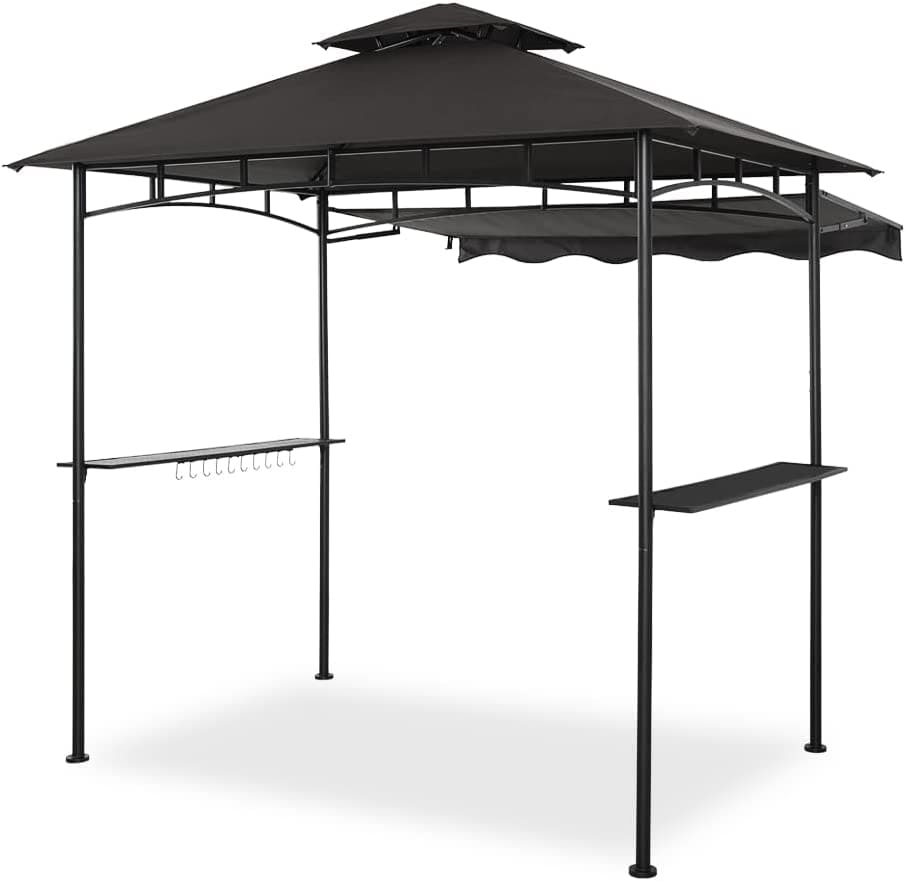
The material of your gazebo is an important factor to consider when deciding to grill under it.
Gazebos made from fire-resistant materials such as metal, stone, or brick is ideal for grilling.
On the other hand, Wooden gazebos are more susceptible to catching fire and should be avoided for grilling purposes.
Grill Type

The type of grill you use is also an important factor to consider when deciding to grill under a gazebo.
Gas grills are the most common type of grill used under gazebos because they produce less smoke and are easier to clean up.
However, charcoal grills are also an option if you’re willing to deal with more smoke and the mess of disposing of the charcoal after cooking.
Ventilation
Proper ventilation is crucial when grilling under a gazebo. The smoke and fumes from the grill need to be able to escape to prevent the risk of smoke inhalation or carbon monoxide poisoning.
Make sure that your gazebo has plenty of ventilation, such as open sides or a vented roof.
Location
The location of your gazebo is also an important factor to consider when deciding to grill under it. Make sure that your gazebo is at a safe distance from any flammable materials, such as trees or bushes.
Additionally, make sure that the gazebo is on a flat and stable surface to prevent any accidents or injuries.
Types of Gazebos That Are Safe for Grilling
Regarding grilling under a gazebo, safety should always be the top consideration. Not all types of gazebos are suitable for grilling, as some materials are more fire-resistant than others.
Here are some types of gazebos that are generally considered safe for grilling:
Metal Gazebos

Metal gazebos are a great option for grilling because they are fire-resistant and durable.
They also provide excellent ventilation, which is essential when grilling under a gazebo.
Metal gazebos are available in a variety of styles and sizes to suit your needs.
Stone or Brick Gazebos
Stone or brick gazebos are another good options for grilling because they are fire-resistant and provide excellent ventilation.
They also add a classic and elegant look to your outdoor space. However, stone or brick gazebos can be more expensive and require more maintenance than other materials.
Vinyl Gazebos

Vinyl gazebos are a popular choice for those who want a low-maintenance option for grilling.
They are fire-resistant, easy to clean, and come in a variety of styles and sizes.
However, they may not be as durable as other materials and may require occasional repairs or replacements.
Open-Air Gazebos
Open-air gazebos are a great option for those who want a more traditional outdoor cooking experience. These gazebos provide plenty of ventilation and allow you to enjoy the sights and sounds of nature while grilling.
However, they do not provide as much protection from the elements as other types of gazebos.
Tips for grilling under a gazebo
Grilling under a gazebo can be a fun way to cook outdoors while staying protected from the elements. However, it’s essential to take certain precautions and use the right equipment to ensure a safe grilling experience.
In this article, we’ll go over some tips for grilling under a gazebo to help you get the most out of your outdoor cooking.
Precautions to Take Before Grilling Under a Gazebo
Before you start grilling under your gazebo, it’s important to take certain precautions to ensure your safety and the safety of those around you. Here are some things to keep in mind:
- Check your gazebo for fire hazards. Make sure that your gazebo is made of fire-resistant materials and that it’s not near any flammable objects such as trees or bushes. Keep a fire extinguisher nearby, just in case.
- Make sure that your grill is clean and in good condition. Check for any leaks or other issues that could pose a safety risk.
- Always supervise your grill. Never leave it unattended, and keep children and pets away from the cooking area.
- Check the weather before grilling. If it’s windy or stormy, it’s best to wait for better conditions.
Equipment Needed for Safe Grilling
To ensure a safe grilling experience under your gazebo, you’ll need to have the right equipment. Here are some things to consider:
- A good quality grill. Whether you prefer gas or charcoal, choose a grill that’s in good condition and appropriate for your gazebo’s size.
- Grilling tools. Invest in high-quality grilling tools such as tongs, a spatula, and a grill brush to make your cooking experience easier and safer.
- Fire extinguisher. Keep a fire extinguisher nearby in case of emergencies.
- Meat thermometer. Use a meat thermometer to ensure that your food is cooked to a safe temperature.
Proper Ventilation for Grilling Under a Gazebo
Proper ventilation is crucial when grilling under a gazebo. Without adequate ventilation, smoke and fumes can build up and become a health hazard. Here are some tips for ensuring proper ventilation:
- Choose a gazebo with open sides. This will allow for maximum ventilation and help to prevent smoke from building up under the roof.
- Install a vented roof. A roof with vents will allow smoke and fumes to escape, helping to keep the air in your gazebo fresh and clean.
- Use a fan. A fan can help to circulate air and prevent smoke and fumes from building up in your gazebo.
- Position your grill correctly. Make sure that your grill is positioned in a way that allows smoke and fumes to escape easily.
Alternatives to grilling under a gazebo
While grilling under a gazebo can be a fun and enjoyable experience, it may not be the best option for everyone. Whether you’re concerned about fire hazards or simply looking for a change of pace, there are plenty of alternatives to grilling under a gazebo.
In this article, we’ll go over some outdoor cooking options and alternatives to grilling under a gazebo.
Outdoor Grilling Options
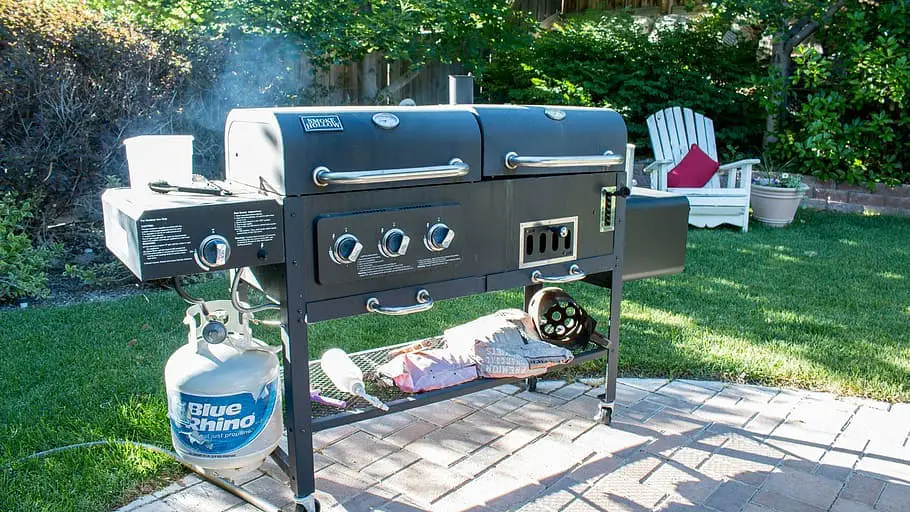
If you’re looking to do some outdoor cooking but don’t want to grill under a gazebo, there are plenty of other options to choose from. Here are a few outdoor grilling options to consider:
- Portable grills. If you’re looking for a smaller, more portable option, a portable grill might be a good choice. These grills are easy to transport and can be used in a variety of outdoor settings, from camping trips to backyard cookouts.
- Fire pits. Fire pits are a great way to cook outdoors and can be used to roast marshmallows, cook hot dogs, and more. They’re also a great option for staying warm on chilly evenings.
- Outdoor kitchens. For those who love to cook outdoors, an outdoor kitchen might be the ultimate solution. With an outdoor kitchen, you’ll have everything you need to prepare delicious meals in your backyard, from grills and ovens to refrigerators and sinks.
Alternatives for Outdoor Cooking Under a Gazebo
If you’re looking for alternatives to grilling under a gazebo, there are plenty of other outdoor cooking options to consider. Here are a few ideas:
- Outdoor pizza ovens. Outdoor pizza ovens are a great way to cook delicious pizzas in your backyard. They come in various sizes and styles, from traditional brick ovens to portable, propane-powered models.
- Smokers. If you’re a fan of smoked meats, a smoker might be the perfect outdoor cooking option. Smokers come in various sizes and styles and can be used to smoke everything from ribs to salmon.
- Outdoor cookers. Outdoor cookers are a versatile option for outdoor cooking and can be used to boil, fry, and steam various foods. They’re also great for cooking seafood and other delicate foods that might fall apart on a grill.
- Outdoor griddles. Griddles are a great option for cooking breakfast foods, burgers, and other flat items. They come in various sizes and can be powered by gas or electricity.
What Are Some Ways to Ensure a Grill Gazebo is Secure?
- Before using your grill gazebo, ensure everything is properly attached and secure. Use the anchor kit that comes with it or buy one if you need it.
- If you’re putting your gazebo on a hard surface like concrete, you can drill holes and put anchors in place.
- You can also tie each corner of the gazebo to nearby posts or stakes in the ground to make it more stable.
- If you live in an area with lots of wind or storms, you can add sandbags or cinder blocks to each leg to make it stronger.
When you cook outside, it’s essential to be safe. Don’t leave the fire alone and put it out before you go inside. Keep a fire extinguisher nearby just in case.
What is the Recommended Distance to Place Your Grill Gazebo and Grill from Your House?
It’s best to put your gazebo and grill at least 10 feet away from your house or other buildings. This is important so that sparks or embers don’t reach the building and start a fire.
Also, ensure enough space around the pavilion and grill for air to move around, especially if you’re using a charcoal grill.
You should also check your local laws to see how far away your gazebo and grill should be from other people’s homes or buildings.
By following these tips, you can make sure your grill gazebo is in a safe spot with enough space for everyone to enjoy your outdoor cooking.
What are the Distinctions Between a Grill Gazebo and a Regular Gazebo?
A grill gazebo is made to protect and help you use your BBQ or other outdoor cooking equipment. It has special features like walls to block wind, shelves, hooks to hold your cooking tools, and sometimes even lights to help you cook at night.
Some grill gazebos even have adjustable roofs and coverings that keep out the sun’s rays.
Because of these useful features, grill gazebos are getting more popular for people who want to cook outside stylishly.
Advantages of Grilling Under a Gazebo:
Grill pavilions are great for outdoor cooking because they protect your BBQ from bad weather and other dangers.
They also provide enough space for your equipment and guests, making it perfect for hosting outdoor parties. Grill gazebos have side panels for better ventilation and built-in lighting for longer grilling sessions.
That’s why more and more people are choosing grill gazebos for their outdoor cooking needs. To ensure your BBQ is safely installed under a grill gazebo, follow the manufacturer’s instructions and keep a fire extinguisher nearby.
Always remember to prioritize safety by having enough space around the pavilion.
FAQs
Q.1 Can You Cook Safely Under a Gazebo?
Grill gazebos are made for safe grilling. They can be moved around or stay in one place, and they have open sides to let air in and out. The surface is strong enough to hold your grill. Many people like aluminum or fabric gazebos for grilling.
Q.2 Is it Possible to Construct a Gazebo Over a Grill?
If you want to build an outdoor bar or a gazebo, a “grill gazebo” is a great option. It’s the right size to fit most standard grills and can be built on your existing patio. You can also add features like lighting, storage for grill accessories, wine glass racks, or built-in coolers to make it your own.
Q.3 Heating Under a Gazebo: What are the Options?
If you’re using a tent or pop-up gazebo in cold weather, getting heaters’s a good idea to keep you warm. You can buy or rent heaters and put them in the right places inside the tent, especially near the entrance.
This will blow warm air inside and make it feel cozy. Putting a heater at the entrance of a pop-up gazebo will give guests a warm welcome and make them feel comfortable.
Q.4 What Are Some Ways to Secure a Grill Gazebo?
The usual way to fasten a gazebo is by using straps around the legs of the structure. You can tie the straps or use a ratchet to secure them. If you decide to tie them, use a double knot to keep them firmly in place.
Q.5 What safety precautions should I take when grilling under a gazebo?
Always keep a fire extinguisher nearby, never leave the grill unattended, and make sure the gazebo is sturdy and secure. Also, ensure the grill is positioned safely away from any flammable materials.
Conclusion
In conclusion, grilling under a gazebo is possible and can be done safely if proper precautions are taken. However, risks are also involved, such as fire hazards, smoke inhalation, and carbon monoxide poisoning.
It is essential to consider factors such as gazebo material, grill type, ventilation, and location before deciding to grill under a gazebo. Metal, stone or brick, vinyl, and open-air gazebos are generally safe for grilling.
Tips for safe grilling under a gazebo include taking precautions before grilling, having the right equipment, and ensuring proper ventilation.
Alternatives to grilling under a gazebo include outdoor grilling options and other alternatives for outdoor cooking.
It is also essential to ensure that a grill gazebo is securely installed and placed at a recommended distance from the house.
A grill gazebo is specifically designed to accommodate and protect your BBQ or other outdoor cooking equipment. It offers additional benefits such as side panels for extra wind protection and ventilation, built-in shelving and hooks, and even built-in lighting options.
We hope this guide about grilling under a gazebo was helpful. If you have any questions, please ask in the comments section below.

